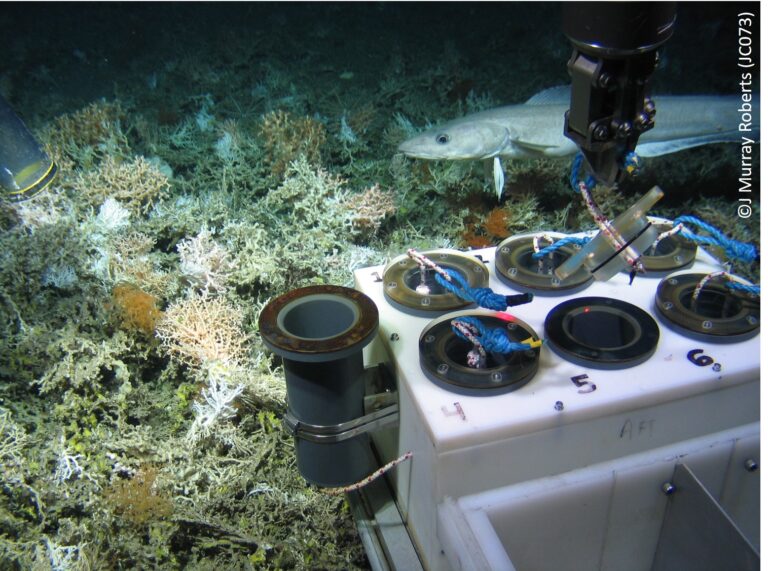Result description
The state-of-the-art aquatic eddy covariance (AEC) technique enables the non-invasive acquisition of high-resolution current velocity and dissolved oxygen time series that are used to quantify benthic oxygen fluxes under the of local hydrodynamic regime.
The AEC technique, published in >70 peer-reviewed articles, including 6 within the framework of the ATLAS project, was applied here to CWC communities. Estimates of oxygen uptake rates of mixed coral garden communities, in the Azores, were estimated for the very first time and used to investigate benthic metabolism at the site. The results from this study clearly identified CWC mound communities at the Rockall Bank as habitats of enhanced carbon cycling, when compared to plain deep-sea habitats at analogous depths.
This work provides additional information to help assess the implications of climate-driven shifts in carbon supply for deep-sea ecosystems.
Addressing target audiences and expressing needs
- Collaboration
We wish to share our knowledge and are interested in collaborations for further studies specifically (i) to integrate physical and biogeochemical observations to better constrain carbon dynamics on cold-water coral habitats spatially; (ii) through technical innovation, to increase temporal coverage (over monthly to yearly timescales) & (iii) to develop a monitoring platform, e.g., a benthic lander to allow for seasonal / yearly assessments of oxygen dynamics and carbon turnover & to integrate a scanning camera system for visual inspections of the communities.
- Research and Technology Organisations
- Academia/ Universities
Result submitted to Horizon Results Platform by UNIVERSITAET BREMEN

